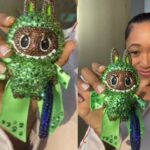Polka Dot Frock – A Timeless Fashion Statement

Polka dot frocks have been associated with playfulness ever since the 1960s when they were used on clothes. The dress pattern comprises regularly placed dots in contrasting colours, which makes it simple and eye-catching. The design has gone from running the fashion world from the runway to becoming part of casual wear. The polka dot frock is loved by women of all ages, regardless of the occasion, and can also be used for official parties.
The History of Polka Dots
Polka dots have quite an interesting story that begins in the 19th century. The phrase “polka dot” originated in the 1800s. The words were taken from the famous ‘Polka’ dance performed actively in both Europe and America at that time.
Because of its graceful movement and rhythm, the polka dance became so popular that designers associated its energetic spirit with a bolt of new fabric that introduced round and uniform dots.
In the 1920s, when fashion designers started using polka dots on clothes, it became associated with fun and youth; that’s when it became popular.
By the 1950s, Audrey Hepburn and Marilyn Monroe had popularised the polka-dot style so extensively for grand women that it had firmly cemented it as a symbol of feminine style.
Polka Dot Frock: A Style Evolution

Let’s trace the history of the polka-dot dress and how it has evolved throughout the decades. The frock decorated with polka dots has gone through several changes throughout the decades to suit the needs and tastes of people from different eras.
1920s: The Birth of Playfulness
In the 1920s, the frock became fashionable with flapper dresses along with several other patterns. The loose-fitting, knee-length cut, along with polka dots, made the dress appealing. This was a time when people started rebelling against conservative styles and adopting the new polka-dot dress, which was a lot more free-spirited.
Dots began appearing more often, especially in black and white colours, and almost everyone began wearing them even on formal occasions.
1950s: The Polka Dot Frock Takes Centre Stage
The 50s were an important decade for polka dot frocks due to the influence of famous people like Audrey Hepburn and Marilyn Monroe. Audrey’s approval was solidified when she was seen wearing pockmarked frocks in the movie Funny Face (1957), in which she starred as a famous Vogue model.
The film itself also proved that polka dots could indeed work both on the sophisticated side of fashion and also for casual occasions.
Marilyn Monroe also popularised the polka dot frock, especially in her famous performance of “Diamonds Are a Girl’s Best Friend” in Gentlemen Prefer Blondes (1953). Monroe’s glazy and seductive reinterpretation of dresses with polka dots transformed it into a powerful symbol associated with femininity and dominance, which is the reason most designers began using red, blue, and yellow instead of the softer classics, black, white, and brown.
1960s and 1970s: A Play on Patterns
By the 1960s and 1970s, the polka dot frock had undergone several transformations. With the rise of modern fashion, polka dots were often used in larger, graphic patterns. The vibrant colours and bold dot sizes in these frocks were a nod to the psychedelic and pop art movements of the time.
Designers like Yves Saint Laurent incorporated the polka dot pattern into more daring and avant-garde designs, while brands like Mary Quant popularised the mini-dress version of the polka dot frock.
The 1970s introduced a more bohemian style to the polka dot frock, with long, flowing dresses featuring smaller dots and earthy colour tones.
The boho-chic look embraced a more relaxed approach to fashion, and the polka-dot frock was often paired with accessories like oversized hats and gladiator sandals.
1980s and 1990s: Polka Dots in the Spotlight
During the 1980s and 1990s, the polka dot frock continued to enjoy popularity, but this time it was often associated with vintage and retro fashion. Designers like Betsey Johnson and Vivienne Westwood incorporated polka dots into their collections, often combining playful patterns with edgy designs that reflected the rebellious spirit of the time.
The 1990s saw a return to the simpler, more classic styles of earlier decades, with polka dots appearing in buttoned-up dresses and skirts in neutral tones.
2000s to Present: Polka Dots in Modern Fashion
In the 2000s and beyond, the polka dot frock has made a resurgence in both high fashion and streetwear. Modern designers have embraced the pattern in fresh and creative ways, using a variety of fabrics, colours, and textures to give the polka dot frock a contemporary twist. Today, the polka dot dress can be seen in a range of styles, from the casual sundress to the elegant evening gown, and it continues to appear on the red carpet, in editorials, and in everyday fashion.
Why is it called polka dots?
Polka dots got their name from the polka dance, which was highly popular in the 1800s. The pattern was named as a means of getting the pattern to sound fun and hip, similar to the dance.
Conclusion
The polka dot frock is an ageless fashion staple that has transformed over the years while continuing to leave its impact in the realms of the fashion world. From simple origins in the 1920s to modern advancements, it is clear the polka dot frock has stood the test of time and fads. It is best suited for people looking to showcase their vintage style or for those who need a new contemporary clothing option.






